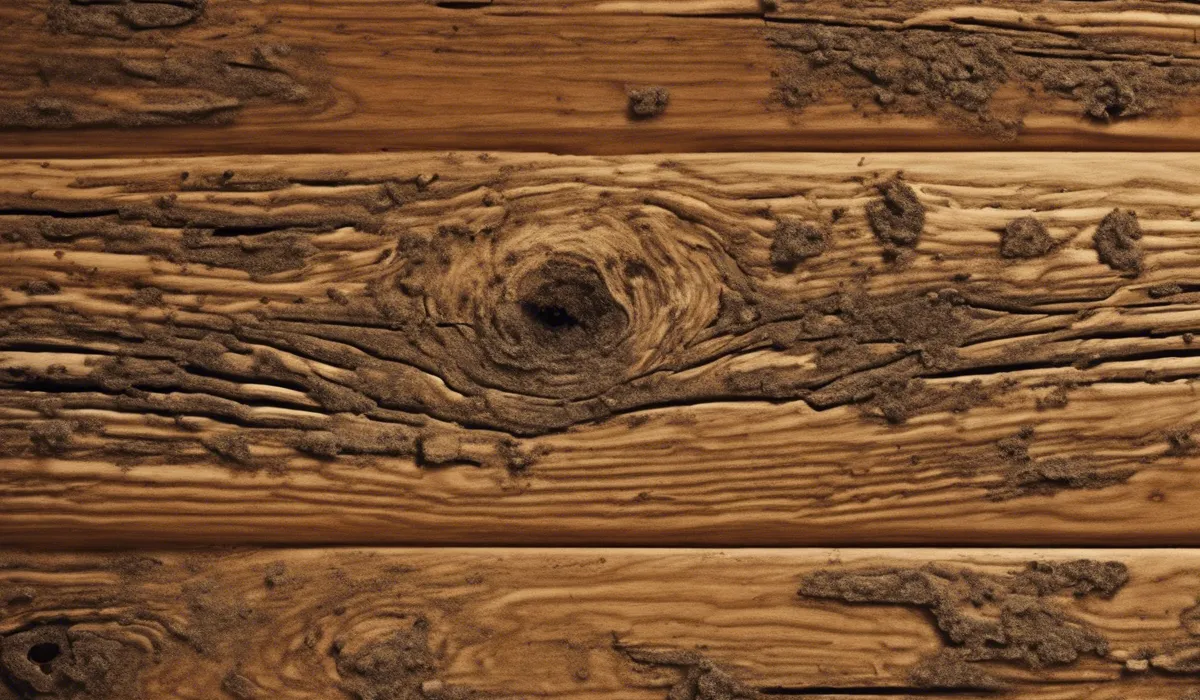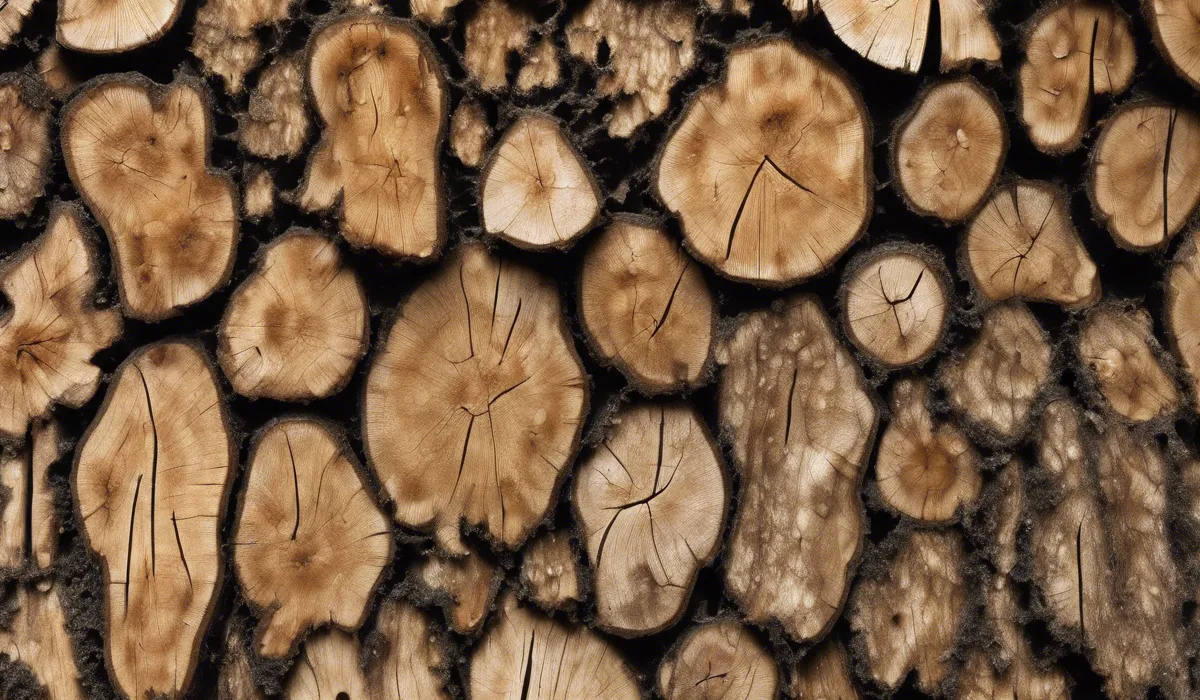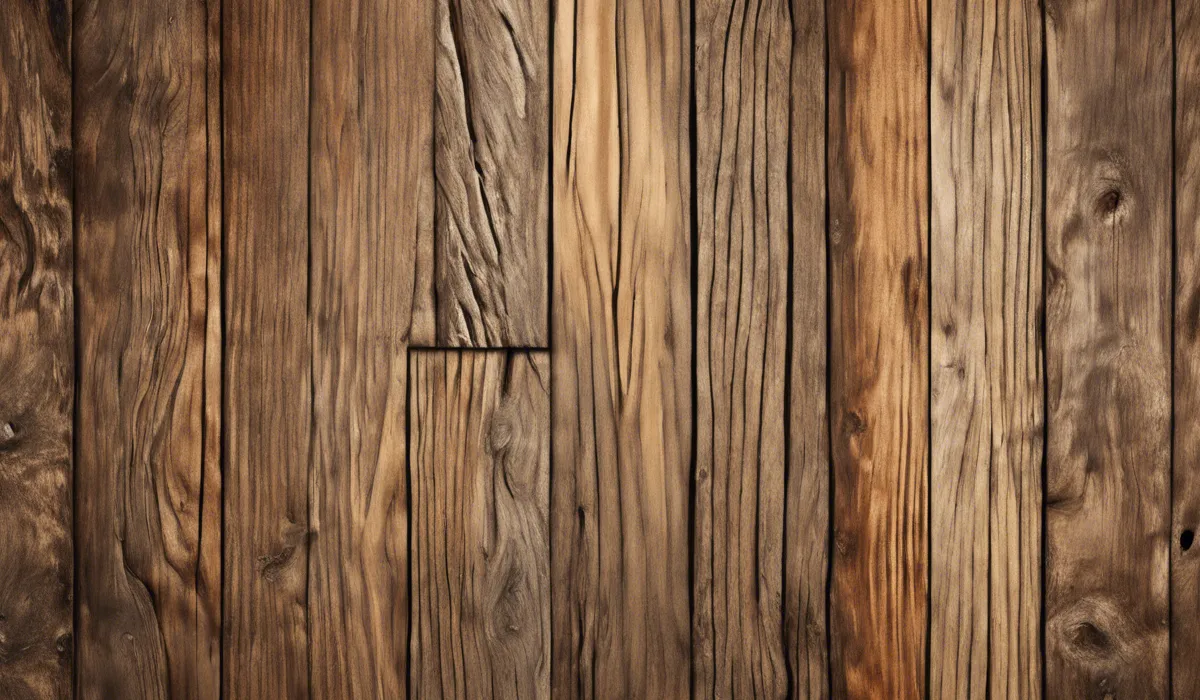Yes, mold can stain wood, often leaving black, green, or white spots. These stains penetrate the wood’s surface, making removal challenging. Sanding or using specialized wood cleaners may be necessary to eliminate mold stains from wood.
Understanding Mold on Wood

Definition of Mold
Mold is a type of fungus that can grow on various surfaces, including wood. It reproduces through tiny spores that float through the air, which, when landing on a suitable surface, can grow into new mold colonies.
Molds come in many shapes and colors, and they can appear as fuzzy, slimy, or powdery patches.
Types of Mold Commonly Found on Wood
Several types of mold may be found on wood, with some of the most common including Penicillium, Aspergillus, and Cladosporium.
These molds can appear in a range of colors, from black and green to white, and each has its own characteristics and growth patterns.
Conditions that Promote Mold Growth on Wood
Mold thrives in environments that are moist, warm, and poorly ventilated. Wood, being a porous material, can easily retain moisture, making it a prime breeding ground for mold when conditions are right.
Lack of sunlight and stagnant air also contribute to mold growth on wood surfaces.
The Difference between Mold and Mildew
While mold and mildew are both types of fungi that grow in moist areas, they are not the same.
Mildew typically appears as a white or gray powdery substance and is often found on plants or organic materials.
Mold, on the other hand, can be black, green, or white and affects a variety of surfaces, including wood, fabrics, and walls.
Impact of Mold on Wood

Surface Staining and Discoloration
Yes, mold can stain wood, often leaving black, green, or white spots that are not only unsightly but can also cause surface discoloration.
These stains can be difficult to remove and may require special cleaning methods to restore the wood’s appearance.
Penetration and Damage to Wood Fibers
The porous nature of wood allows mold to penetrate beyond the surface, affecting the wood fibers.
This penetration can lead to a weakening of the wood’s structure, potentially causing damage that is more extensive than just surface-level stains.
Long-Term Effects on Wood Integrity
If left unchecked, mold can have serious long-term effects on the integrity of wood.
Continuous mold growth can lead to rot, which compromises the wood’s strength and stability, eventually necessitating costly repairs or replacement.
Health Implications of Moldy Wood Surfaces
Moldy wood can also have health implications for individuals who are exposed to it. Mold spores can cause allergic reactions, respiratory issues, and other health concerns, particularly for those with mold sensitivities or compromised immune systems.
Removing and Preventing Mold Stains on Wood

Appropriate Cleaning Solutions for Mold on Wood
To effectively tackle mold on wood, it’s essential to use the right cleaning solutions.
A mixture of water and mild detergent can be used for light mold stains, while more stubborn stains might require a blend of water and vinegar or a commercial mold remover specifically designed for wood.
Step-by-Step Guide to Removing Mold from Wood
Removing mold from wood involves several steps. First, protect yourself by wearing gloves, a mask, and protective eyewear.
Then, clean the affected area with a soft brush and a suitable cleaning solution. After scrubbing, rinse the area with clean water and dry it thoroughly to prevent further mold growth.
Tips for Preventing Mold Growth on Wood Surfaces
Preventing mold growth on wood surfaces requires controlling moisture levels, ensuring good ventilation, and reducing humidity in the environment.
Regularly inspecting wood surfaces for early signs of mold can also help in taking timely action to prevent its spread.
When to Seek Professional Help for Mold Removal?
If the mold infestation is large or if the wood is severely damaged, it may be necessary to seek professional help.
Professionals have the tools and expertise to safely and effectively remove mold from wood, ensuring that it doesn’t return and that your home remains safe and healthy.
Final Thoughts
Mold can indeed leave stubborn stains on wood, manifesting as black, green, or white spots.
These discolorations often seep deep into the wood grain, posing a significant challenge for removal.
To tackle these persistent stains, sanding the affected area or applying specialized wood-cleaning products may be required to restore the wood’s appearance.
